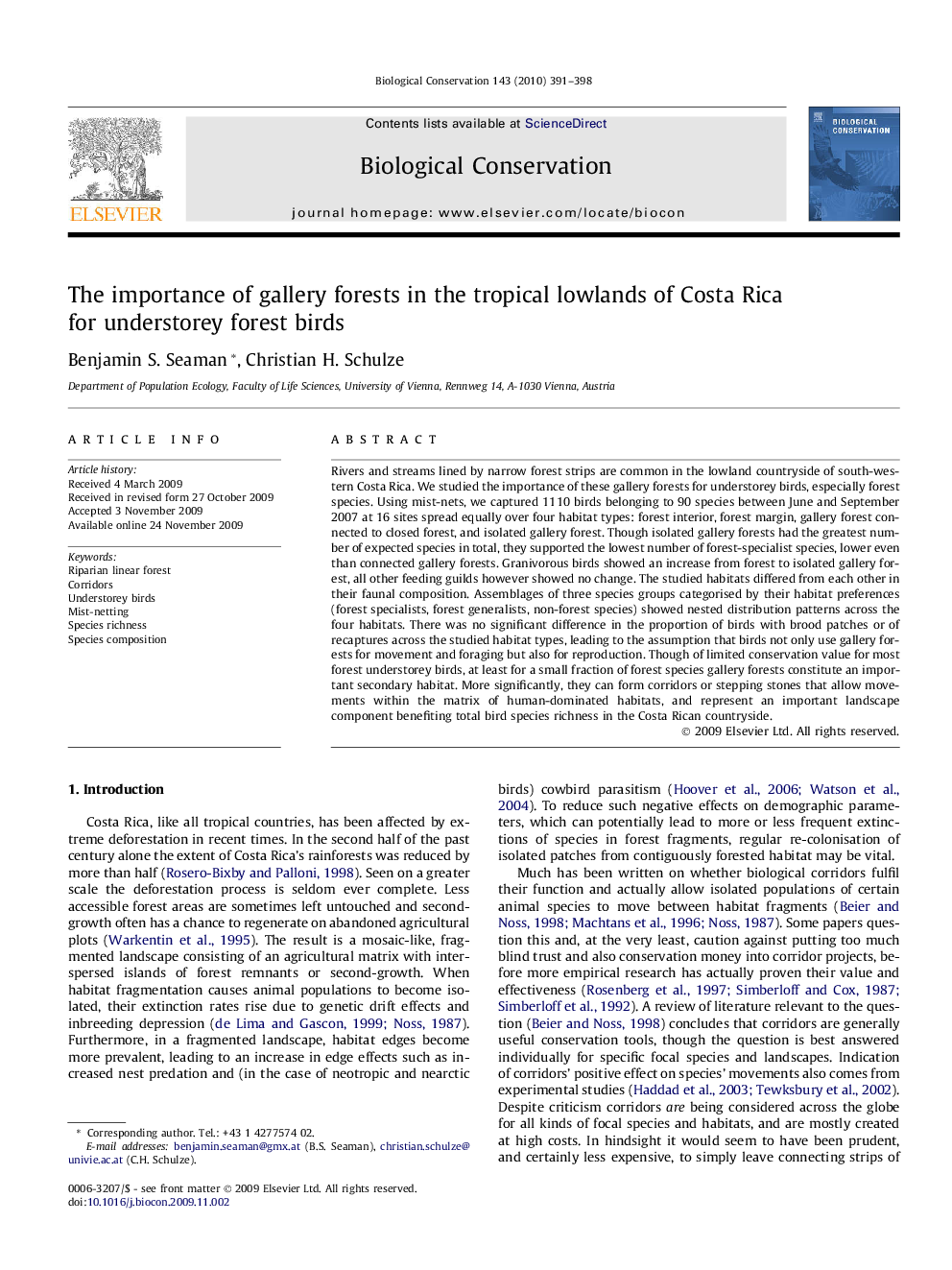| Article ID | Journal | Published Year | Pages | File Type |
|---|---|---|---|---|
| 4386511 | Biological Conservation | 2010 | 8 Pages |
Rivers and streams lined by narrow forest strips are common in the lowland countryside of south-western Costa Rica. We studied the importance of these gallery forests for understorey birds, especially forest species. Using mist-nets, we captured 1110 birds belonging to 90 species between June and September 2007 at 16 sites spread equally over four habitat types: forest interior, forest margin, gallery forest connected to closed forest, and isolated gallery forest. Though isolated gallery forests had the greatest number of expected species in total, they supported the lowest number of forest-specialist species, lower even than connected gallery forests. Granivorous birds showed an increase from forest to isolated gallery forest, all other feeding guilds however showed no change. The studied habitats differed from each other in their faunal composition. Assemblages of three species groups categorised by their habitat preferences (forest specialists, forest generalists, non-forest species) showed nested distribution patterns across the four habitats. There was no significant difference in the proportion of birds with brood patches or of recaptures across the studied habitat types, leading to the assumption that birds not only use gallery forests for movement and foraging but also for reproduction. Though of limited conservation value for most forest understorey birds, at least for a small fraction of forest species gallery forests constitute an important secondary habitat. More significantly, they can form corridors or stepping stones that allow movements within the matrix of human-dominated habitats, and represent an important landscape component benefiting total bird species richness in the Costa Rican countryside.
